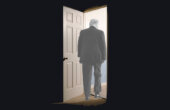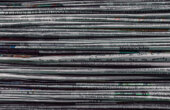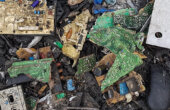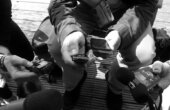“Hobnobbing with the Psychologists”: The Woman Who Pioneered Social Science Reporting
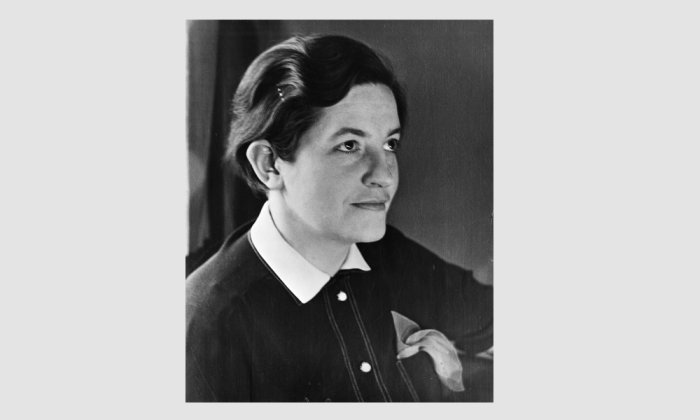
By January 1938, Jane Stafford had become the premier medical journalist in the United States, regularly covering advances in cancer research and treatment. While thanking an American Society for Control of Cancer (ASCC) official for sharing positive reactions to her recent newspaper series, she inquired about a press dinner to which she had been invited a few months earlier. The event had already taken place, the publicity director admitted, and at the Harvard Club, where women were not allowed. To have held it elsewhere “would have added a considerable amount to our budget,” and “according to writers and physicians — to have had a woman present would have considerably changed the character of the dinner.” When the next ASCC press invitation arrived (misaddressed to “Mr. James Stafford”), Stafford quickly accepted. Within days, the organization replied once again that she would not be welcome: “The University Club having been selected as the most convenient meeting place for the doctors, our hands are tied.” Ever the diligent reporter, Stafford discovered that Time’s senior medical writer, a woman, had also been disinvited.

For mid-20th-century female journalists, especially ones who covered science and medicine, such situations were commonplace. Gender-based bias and restrictions imposed constant challenges in their workspaces, whether at press conferences or academic seminars. Unpacking technical jargon and analyzing research breakthroughs were daunting enough tasks; succeeding in the news business, however, required access to the best sources and latest information. Cultural prejudices, social customs, and gratuitous discrimination disrupted the playing field. To their credit and to the benefit of millions of readers, a group of accomplished women at a small Washington, DC-based science news organization called Science Service overcame such barriers and, with self-confidence, intelligence, and skill, pioneered in the nascent field of science journalism.
The founders’ vision for the news service had from the outset included attention to the social sciences — a decision with which some trustees and prominent supporters openly disagreed — and the last major addition to the editorial office in the 1920s helped eventually to implement the commitment. Smart and forthright, Marjorie Van de Water found Science Service to be a congenial, welcoming environment. Her family background — well educated, socially connected, and disrupted by crisis, loss, and change — resembled that of Jane Stafford, and she shared interests in photography and contemporary culture with many of her colleagues. Hired in spring 1929, Van de Water became a skilled feature writer and dependable editor, and remained with the organization until her death in 1962.
Even though Van de Water remained an “erudite” writer, she learned how to assess audience interests as well as choose topics and approaches with wider appeal, such as crime and the criminal mind.
Becoming a skilled professional writer did not happen overnight. Van de Water’s overestimation of the average newspaper reader’s familiarity with technical terms prompted Edwin Slosson, Science Service’s first director, to advise that she “take up a good newspaper and look over the notes and try to acquire the style even though you may detest it.” One journalism professor scrawled “this is too darned erudite” on her work, but when another teacher encouraged her to submit a short story assignment to a magazine, Van de Water “took a deep breath,” followed the suggestions, and received a reaffirming acceptance (and check) “by return mail.”
Marjorie was first hired at Science Service on a temporary basis as editorial secretary, but she quickly proved her ability to produce publishable news reports. In October 1929, a few weeks before Slosson’s death, she became a full-time member of the writing team.
To succeed at science reporting, Van de Water and her colleagues had to be able to identify — quickly and accurately — what was or was not “news” in a particular discipline or research area and then draft an account suitable to the assignment, whether a 500-word wire service article or double-spread illustrated Sunday supplement feature. Whatever the format, newspaper editors wanted stories relevant to their readers’ lives, and when the global crisis deepened after the 1929 stock market crash, they increasingly welcomed insights from sociology and economics. Although some leading scientists, like physicist Robert A. Millikan, persistently condemned those disciplines as quagmires of “controversy and politics,” Science Service forged ahead, with support from Robert P. Scripps, who had inherited controlling interest in the publishing empire and shared his father’s interest in application of the social sciences. Flexing his power (the family trust’s annual subsidy and client business directed from Scripps-Howard newspapers), Robert persuaded the Science Service trustees to convene a meeting at which scientists and publishing executives might discuss how to improve as well as increase social and behavioral science reporting.
Although Van de Water would have undoubtedly been engaged in planning an April 1932 dinner and conference, all the speakers and 50 formal “participants” listed in published accounts were male. Robert Scripps was apparently the only speaker who dared address the social importance of public support for science, resolutely dismissing assertions that research would thrive “whether anyone outside the laboratories knows about it or not,” and that scientists should never consider how their work affects humanity. The world faced new perils. Scripps contended that scientists, including social scientists, must “make the millions feel, before they perhaps lose their patience, that all our facts and all our scientific theories can be made to have bearing upon such vital matters as war, poverty, insecurity, unemployment, disease — [and] even political misrepresentation.”
With encouragement from Scripps and a few sympathetic trustees, Van de Water and her colleagues got to work. Throughout the 1930s, they interpreted the latest social science research, and applied the insights to contemporary political and social issues. Van de Water’s prior work in intelligence testing and contacts among local social scientists proved invaluable, and in her coverage of psychology and psychiatry, she pioneered a new journalistic beat among U.S. news reporters.
Even though Van de Water remained an “erudite” writer, she learned how to assess audience interests as well as choose topics and approaches with wider appeal, such as crime and the criminal mind. From the outset, she explored how science might help explain (or treat) humanity’s dark sides. Her first two bylined articles for Science News-Letter — “The Story of American Crime” (July 27, 1929) and “Why Children Are Murderers” (August 10, 1929) — combined economic and statistical data with interviews of researchers and clinicians studying antisocial behavior. Within a year she was publishing Sunday magazine features like “Trick Questions to Test Your Personality” and “How the Brains of Twins Differ.” She devised clever ways to hook readers, playing on conventional stereotypes and then countering with research-based explanations. One article’s title screamed “Women Scare More Easily Than Men,” but its text, summarizing recent research on anger and emotion, belied the sensationalistic presentation, offering ironic comment on attempts to link gender and weakness. Features on criminality and corruption — “How Politicians Get That Way” (July 1932) and “Uncle Sam Helps Catch the Racketeer” (October 1933) — offered similar composed, rational, data-based explanations rather than “crime-busters” movie storylines.
To gather news and establish connections with sources, Van de Water attended almost every American Psychological Association (APA) meeting from 1931 until her death. It was an exciting time to be interacting with experts in that field. In an essay for the American Scholar, she described how during recent “treks” to psychology meetings, she had listened to
Dr. Thorndike explaining how a satisfying after-effect influences the connection whose after-effect it is; Dr. Yerkes pleading the need for standardized biological laboratory material; Dr. Spearman describing personality in terms of the G-factor, the V-factor and the rest of the alphabet soup; Dr. McGraw showing movies of New York twin babies who demonstrated on roller skates the dramatic effect of intensive training and social stimulation; Dr. Dennis demonstrating with Virginia twins that infants develop quite well without any training or social stimulation whatever; rats in mazes, humans in testing rooms, guinea pigs on the dissecting table; ape and baby brought up together; brain waves.
After one conference, the city editor of the New York World-Telegram made a special effort to thank her “for the good work you did for us while you were up here hobnobbing with the psychologists.”
Converting a meeting’s “bombardment of scientific wordage” into a “compact and readable” article, and completing that task on deadline, relied on cooperation from sources. On receiving the APA prize for science writing, Van de Water spoke of the various reactions she had encountered during her career. Only once had a psychologist refused to provide an advance copy of his remarks, and sometimes speakers had shared their only copy of a talk within hours of the presentation time. There were, she admitted, two types who could be “difficult”: “the scientist who is suspicious of the reporter and does not want to have his work reported” because of previous bad experiences or criticism from colleagues, and the “publicity seeker [who] haunts the press room, eager to talk to anyone who will listen.”
One of Van de Water’s reliable (i.e., not difficult) sources through the years was psychologist Leonard Carmichael, with whom she maintained a cordial professional relationship as he moved from Brown University professor to Tufts College president and eventually head of the Smithsonian Institution and a Science Service trustee. Carmichael believed that because the field of psychology “suffered from popularization more than most other sciences . . . the psychologist must lean over backwards in his effort to avoid the merely sensational.” Despite admitting that his “own writing would not be suitable for the newspaper,” Carmichael felt sufficiently confident to rewrite a Van de Water draft in 1935, adding his “very best personal greetings!” at the end. He respected Van de Water’s skills (sharing compliments with her boss and endorsing her for professional honors) and trusted her judgment. When a reporter “representing the much and rightly despised American Weekly” sought access to Carmichael’s current project, the psychologist explained that he had already “given the story” to Van de Water and told her that “I would do nothing about the matter until I heard from you.”
Van de Water maintained similarly cordial relations with other prominent psychologists, such as Yale professor Carlyle F. Jacobsen and Harvard professor Gordon F. Allport. Karl A. Menninger called her summary of “Man against Himself” (1938) “even better than the book itself.” Yale primate researcher Meredith Pullen Crawford praised how she “handled the publicity” on his 1937 experiments, and Carnegie Institution embryologist Josephine Ball complimented her “excellent reporting.” Even the psychologist James McKeen Cattell (not prone to facile praise) begrudgingly admitted that he “admired Miss Van de Water’s accuracy and her avoidance of pseudo-scientific subjects.”
Like many on the staff, Van de Water was an avid photographer, winning prizes in local newspaper photography contests and serving for several years as the organization’s photography editor. When Washington and Lee University created a new course titled Elementary Photography and Pictorial Journalism (“the photograph as a channel for communication”), Science Service director Watson Davis submitted Van de Water’s photos as exemplars. Her talent also helped to nourish professional connections with fellow shutterbugs. Tufts College psychologist Weston Ashmore Bousfield sent copies of his snapshots from an APA meeting, so she asked for his help in identifying people in her own photos. For Van de Water, a camera became essential equipment at professional meetings, with one psychologist describing her conference outfit as “brown overcoat, camera in brown leather case depending from neck.”
As photographer and journalist, with concern for accuracy and responsible reporting, and with a keen eye for detail, Van de Water devoted her career to chronicling the rise of the social sciences.
Marcel Chotkowski LaFollette is an independent historian. She is also Research Associate at the Smithsonian Institution Archives and the author of “Science on the Air,” “Science on American Television” and “Writing For Their Lives,” from which this article is adapted.
